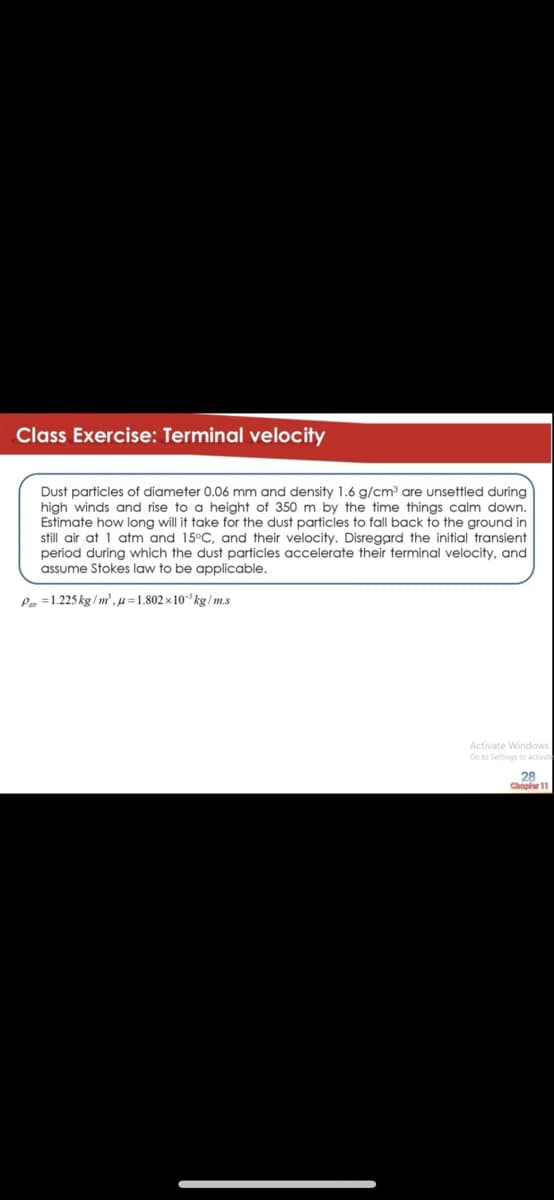Dust particles of diameter 0.06 mm and density 1.6 g/cm are unsettled during high winds and rise to a height of 350 m by the time things calm down. Estimate how long will it take for the dust particles to fall back to the ground in still air at 1 atm and 15°C, and their velocity. Disregard the initial transient period during which the dust particles accelerate their terminal velocity, and assume Stokes law to be applicable. Pe =1.225kg /m', µ =1.802 x 10 kg/m.s
Dust particles of diameter 0.06 mm and density 1.6 g/cm are unsettled during high winds and rise to a height of 350 m by the time things calm down. Estimate how long will it take for the dust particles to fall back to the ground in still air at 1 atm and 15°C, and their velocity. Disregard the initial transient period during which the dust particles accelerate their terminal velocity, and assume Stokes law to be applicable. Pe =1.225kg /m', µ =1.802 x 10 kg/m.s
Principles of Heat Transfer (Activate Learning with these NEW titles from Engineering!)
8th Edition
ISBN:9781305387102
Author:Kreith, Frank; Manglik, Raj M.
Publisher:Kreith, Frank; Manglik, Raj M.
Chapter5: Analysis Of Convection Heat Transfer
Section: Chapter Questions
Problem 5.49P
Related questions
Question

Transcribed Image Text:Class Exercise: Terminal velocity
Dust particles of diameter 0.06 mm and density 1.6 g/cm are unsettled during
high winds and rise to a height of 350 m by the time things calm down.
Estimate how long will it take for the dust particles to fall back to the ground in
still air at 1 atm and 15°C, and their velocity. Disregard the initial transient
period during which the dust particles accelerate their terminal velocity, and
assume Stokes law to be applicable.
Pa =1.225 kg / m',µ=1.802 × 10° kg/ m.s
Activate Windows
Go to Settings to activate
28
Chap 11
Expert Solution
This question has been solved!
Explore an expertly crafted, step-by-step solution for a thorough understanding of key concepts.
Step by step
Solved in 2 steps with 2 images

Knowledge Booster
Learn more about
Need a deep-dive on the concept behind this application? Look no further. Learn more about this topic, mechanical-engineering and related others by exploring similar questions and additional content below.Recommended textbooks for you

Principles of Heat Transfer (Activate Learning wi…
Mechanical Engineering
ISBN:
9781305387102
Author:
Kreith, Frank; Manglik, Raj M.
Publisher:
Cengage Learning

Principles of Heat Transfer (Activate Learning wi…
Mechanical Engineering
ISBN:
9781305387102
Author:
Kreith, Frank; Manglik, Raj M.
Publisher:
Cengage Learning